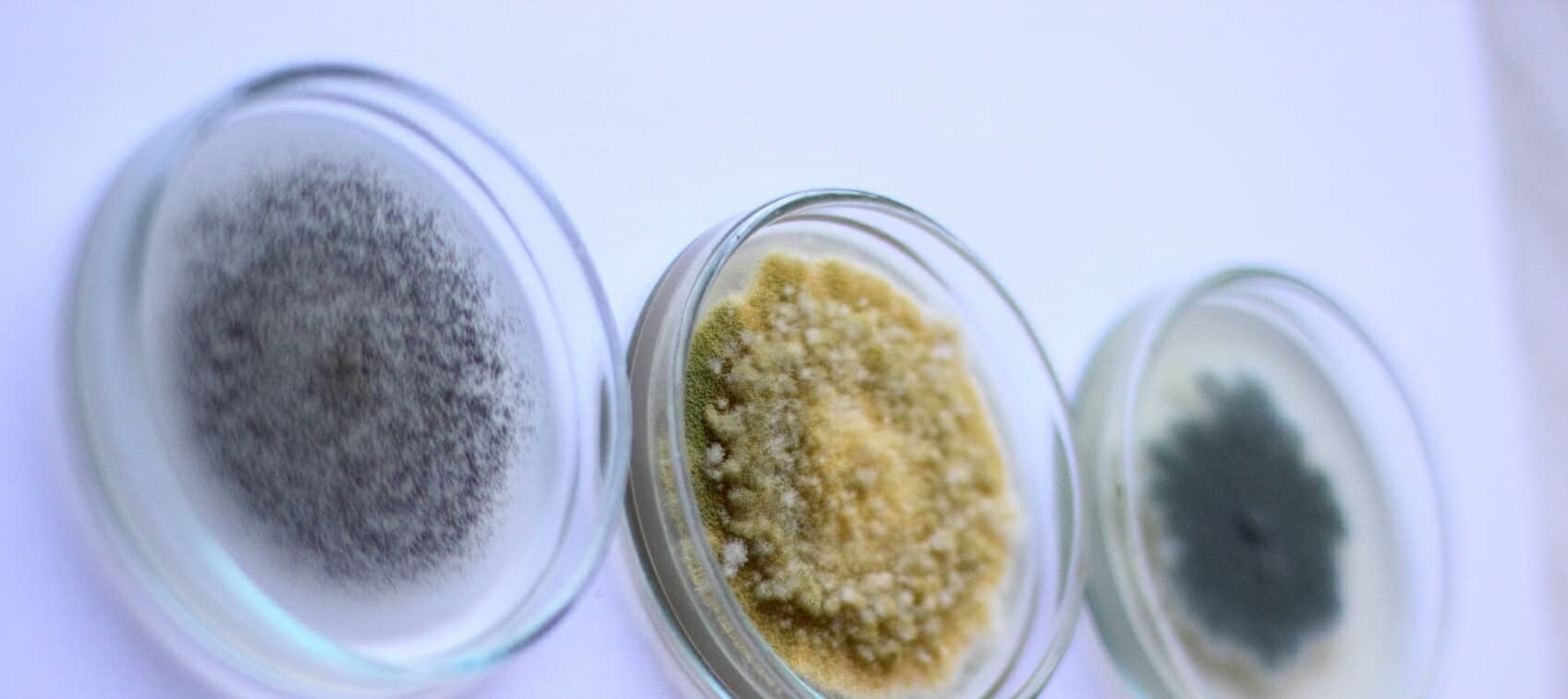
The adverse health effects of mold are some of the most pervasive, and least understood, health issues in today’s world. Unfortunately, it’s a health issue many doctors miss.
Like Lyme disease, mold is the “great masquerader.” It can cause a wide variety of symptoms to appear, mimicking other illnesses. Over the years I’ve learned that if someone is sensitive to mold and is quite ill there is nothing more important than treating the underlying mold problem.
That’s because if the mold-induced illness isn’t addressed first it can cause an enormous amount of inflammation, free radical stress, and toxicity in the body.
What Are the Symptoms of Mold Exposure?
Toxic mold symptoms can include:
- Fatigue
- Weight gain
- Headaches
- Asthma
- Coughing or wheezing
- Chronic sinus infections
- Muscle and joint pain and weakness
Symptoms of mold exposure can also include:
- Visual disturbances
- Balance issues
- Trouble concentrating and “brain fog”
- Dizziness
- Irritable bowel syndrome (IBS)
- Skin rashes
- Fever
- Swollen lymph nodes
- Mood swings
- Numbness and tingling
- Nosebleeds
The most common health effects of mold I see in adults are mental and physical fatigue, headaches, morning sinus congestion, and muscle aches. For children, asthma and cough are common, as is a suppressed immune system where they catch every cold and flu that goes around.
Toxic Mold Symptoms Can Vary With the Type of Mold
There are thousands of mold species, some helpful and some problematic. On the positive side, some mold species help to recycle organic matter which is very important for the ecosystem. Other mold species are utilized for food production—for instance making bread, cheese, sausage, and alcohol. Plus there are medications created from molds, such as penicillin, lovastatin, and cyclosporine.
But other mold species can cause the types of toxic mold symptoms I mentioned earlier. “Sick building syndrome,” for example, often results from mold spores circulating in the air ducts of a building. These tiny spores, invisible to the naked eye, can produce mycotoxins that make us sick. Mycotoxins can be absorbed through the intestines, lungs, and skin. The most problematic mycotoxins include ochratoxin A, aflatoxin, and trichothecenes.
Mold Exposure Is Likely If...
- Your home or office has water damage or water intrusion and nothing was done to remediate it within 24-48 hours. Mold can grow with very little moisture, so make sure small leaks are repaired and damp areas like bathrooms, showers, and windowsills are well ventilated and cleaned regularly.
- You smell a musty odor. That odor is often caused by microbial volatile organic compounds (VOCs) which are not thought to affect our health in a negative way. This musty odor, however, is a red flag that mold growth is present.
Many companies will come to your home and test for the presence of mold spores. One of the most popular mold testing methods is to collect air samples indoors and outdoors and compare them. The indoor mold count should be less than outdoors. Unfortunately, air testing for mold is limited in its effectiveness and can lead to false-negative results since it only provides a brief snapshot in the time of which mold spores are present.
An alternative DIY at-home test for mold is the Environmental Relative Mold Index (ERMI) which is available through Mycometrics or Envirobiomics. The ERMI test analyzes samples of dust from the home using a DNA-based method for identifying specific mold species. This test also has its limitations, but overall is a good test to start with if hiring a mold inspector is not available or too costly.
How to Test for Mold Inside Your Body
One reason mold is so harmful is the spores and mycotoxins create a domino effect, causing your body’s inflammatory response to go into overdrive. And some people are more vulnerable to these health effects than others.
About 24% of the population has a genetic susceptibility (HLA-DR) that prevents proper excretion of mycotoxins. In other words, once you’ve been exposed to mycotoxins they continue to recirculate in your body, resulting in an overactive immune response that disrupts many symptoms in the body.
If you suspect you have toxic mold symptoms or a mycotoxin illness traceable to exposure to a water-damaged building, seek help from an integrative physician who is knowledgeable about the health effects of mold.
Your doctor may run the following labs to test for mold:
- TGFb-1 (Labcorp)
- MMP-9
- C4a (National Jewish Health)
- CD-57 (Labcorp)
- HLA –DR 1-5 and DQ (Labcorp)
- VEGF
- MSH
Most of these labs are non-specific, so other medical conditions need to be ruled out. I have stopped routinely running the above blood tests as I do not find them very useful now that urine and other blood tests are more readily available, but nonetheless, many practitioners still run these to get a more complete picture of what may be going on.
There are also urine tests available through RealTime Laboratories, The Great Plains Laboratory, and Vibrant America that test for mycotoxins. These tests show you levels of mycotoxins that are being excreted in the urine, which can provide valuable information about mold exposure. These tests are available through some integrative medicine specialists. They range in cost from $300-$400 per urine analysis.
One of the newer blood tests available specific for mycotoxin illness is called MyMycolab. This test measures the IgG and IgE response to certain mycotoxins, which gives valuable information about mycotoxin exposure and immune system involvement. I usually run this test on my patients, and often use one of the above urine tests for confirmation purposes. The cost of the MyMycolab test is $400.
Finally, there is an online test called the Visual Contrast Sensitivity Test that is a great screening tool for biotoxin exposure. Biotoxins, including mycotoxins, can disrupt neurological function, and alter the ability of your eyes to contrast shades of light and dark. If you fail this test there’s a 92% chance that neurological function is affected by a biotoxin such as a mycotoxin produced from mold. The cost of this test is usually $15.
The Good News Is the Health Effects of Mold Are Treatable
Once you determine mold is making you ill, there are many treatments to remedy the situation. First and foremost, the source of the mold must be eliminated. Consider hiring a professional remediation crew so you don’t risk exposing yourself to more mold spores and mycotoxins. Remediation can be an expensive process, so make sure you get quotes from a variety of mold remediation companies.
Plus, here’s how to detox naturally to eliminate mold from your body:
- Use binders and sequestering agents such as activated charcoal, bentonite clay, chlorella, and zeolite to bind mycotoxins and remove them. They also help to prevent the reabsorption of mycotoxins in the gut. See the video below to learn more.
- Take glutathione is a powerful antioxidant that helps support detoxification pathways and can be used in conjunction with saunas to help mobilize and remove mycotoxins. If taken orally, 1 tsp a day (450 mg) will suffice. It can be administered intravenously as well.
- Take probiotics like Lactobacillus rhamnosus which can degrade or bind certain species of aflatoxin.
- Make sure other yeasts in the body such as Candida are under control. Sometimes it’s necessary to use systemic herbal antifungals to reduce yeast and mold counts
- Avoid high mycotoxin content foods like grains (corn, wheat), chocolate, wine, coffee, beer, cheese, sugar, and peanuts. I believe that when people react to wine it’s not the sulfite content, but rather the mycotoxin content, that causes a headache or fatigue to kick in.
- Exercise in any form will increase blood flow throughout the body and increase the mobilization of mycotoxins from fat stores.
- Try sauna therapy. It's an excellent way to detox naturally and remove mycotoxins from your body. In fact, there is research showing that ochratoxin is excreted through sweat.
- Use a HEPA air purifier to remove mold spores from the air, and reduce the overall toxic burden.
- Use a dehumidifier to remove moisture from the air. It can especially make a difference in a damp environment like a basement.
Finally, if you are chronically ill and going from doctor to doctor with symptoms, and conventional medicine just can’t figure it out—three things should come to mind: chronic undiagnosed Lyme disease, overexposure to electromagnetics (“electropollution exposure”), and undiagnosed mold. It could be any one of the above or a combination of all three, that’s making you ill.
Resources
- Hardin BD, et al. Journal of Occupational and Environmental Medicine 2003;45(5);470-478.
- Shoemaker RC, et al. Neurotoxicology and Teratology 2006;28(5):573-88.
- Shoemaker et al. Neurotoxicology and Teratology 2005;27(1):29-46.
- Hope J. Scientific World Journal. 2013. doi: 10.1155/2013/767482.
- Dr. Andrew Campbell. YouTube. The Effects of Mycotoxins on Human Body.


